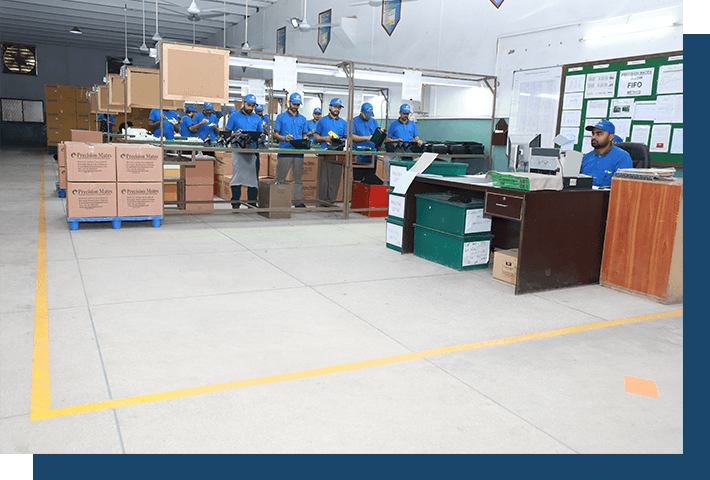Our Process

We ensure complete customer satisfaction in each product that we produce and never compromise on quality. We aim for zero defects with on time delivery. Precision Mates conducts periodic audits and risk assessment of its activities, processes and products so that it may reset and review its objectives and targets which may further lead towards providing a loss free, assured and improved QHSE standard.
Quality Policy
Our prime aim is to provide best possible quality to our customers. If customers are satisfied, we are satisfied. Our quality policy states:
We are committed to provide our customers quality products to achieve their satisfaction Quality is the top priority of Precision Mates.


The Injection Molding Process
Injection moulding is a manufacturing process for producing parts by injecting material into a mould. Injection moulding can be performed with a host of materials, including metals, glasses, elastomers, confections, and most commonly thermoplastic and thermosetting polymers.
Material for the part is fed into a heated barrel, mixed, and forced into a mold cavity where it cools and hardens to the configuration of the cavity. After a product is designed, usually by an industrial designer or an engineer, moulds are made by a mouldmaker (or toolmaker) from metal, usually either steel or aluminum, and precision-machined to form the features of the desired part.
Advances in technology now also allow for 3D printing of injection moulds for certain applications, using photopolymer plastics which do not melt during the injection process. Injection moulding is widely used for manufacturing a variety of parts, from the smallest components to entire body panels of cars.
Parts to be injection moulded must be very carefully designed to facilitate the moulding process, the material used for the part, the desired shape and features of the part, the material of the mould, and the properties of the moulding machine must all be taken into account. The versatility of injection moulding is facilitated by this breadth of design considerations and possibilities.

